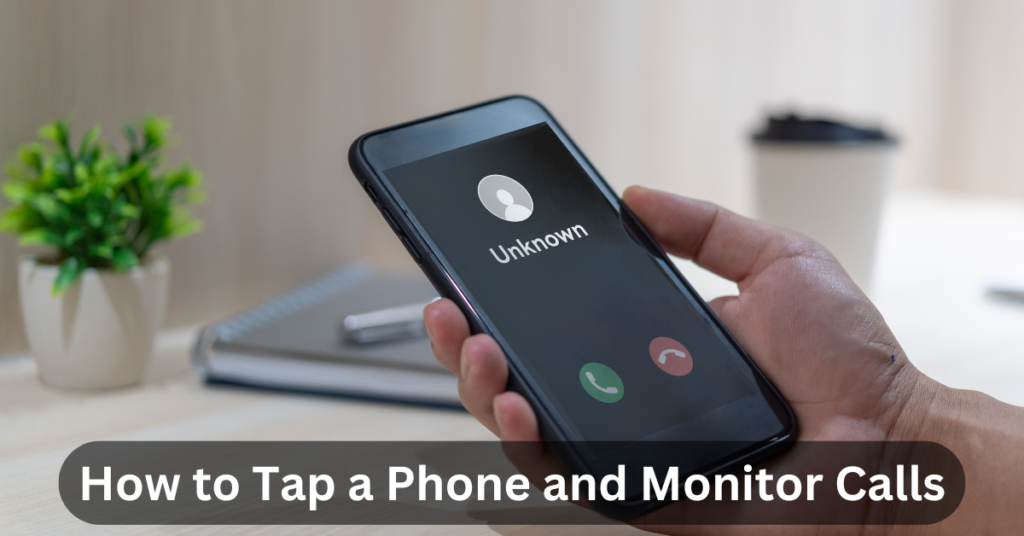Phone tapping, also known as wiretapping, is the practice of secretly listening to or recording phone conversations without the knowledge of the people involved. It can be done on landlines or cellphones, and the technology behind it has evolved significantly over the years. Let’s look into the details of how to tap the phone, the different methods used to tap someone’s phone or calls, and the technology involved in phone tapping. The focus is purely on understanding the process and techniques of phone tapping.
What Is Phone Tapping?
Phone tapping means secretly intercepting phone calls or messages to listen in or record them. Traditionally, this was done by physically connecting a device to telephone wires. Today, with mobile phones and digital networks, tapping can be done remotely using advanced technology. Phone tapping can be legal, done by law enforcement with permission, or illegal when done without consent.
How Phone Tapping Has Changed Over Time
In the past, phone tapping involved physically attaching a listening device to landline wires. Technicians would clip into the copper wires to intercept conversations. This method was straightforward but required physical access to the phone line.
With the rise of mobile phones and digital communication, phone tapping has become more complex. Now, tapping can be done remotely, without any physical connection. Hackers or agencies can intercept calls and messages by exploiting weaknesses in mobile networks or using special devices that act like fake cell towers. Learn more about these remote and network-based phone hacking techniques.
Common Techniques Used to Tap Phones
1. SS7 Exploitation (Signaling System No. 7)
SS7 is a global system used by phone companies to route calls and texts between networks. It was created decades ago without strong security measures. Hackers can exploit SS7 vulnerabilities to listen to calls or read text messages without the user knowing.
For example, attackers can redirect calls and messages to their own devices or silently listen to conversations. This method requires access to telecom networks but is very effective.
2. Using Interceptor Devices (Fake Cell Towers)
Modern phone tapping often uses devices called interceptors or IMSI catchers. These devices act like fake cell towers. When a phone connects to them, the interceptor can capture calls, texts, and data.
These devices can be hand-held or larger, suitcase-sized machines. They trick phones into connecting by pretending to be legitimate network towers. Once connected, the interceptor records conversations and forwards the signals to the real network, so the phone user doesn’t notice any interruption. Find more about phone tapping techniques.
3. Voicemail Hacking
Some phone tapping involves accessing voicemail systems. If voicemail is protected by weak PINs or default passwords, hackers can call the voicemail service and listen to messages. Voicemail can contain sensitive information or verification codes.
4. Phone Cloning
Phone cloning means copying the identity of a phone onto another device. By cloning a phone’s SIM card or IMEI number, hackers can receive calls and texts meant for the original phone. This allows them to listen to calls and read messages without the owner’s knowledge. Learn about phone number hacking for related techniques.
5. Wiretapping Landlines
Though less common today, wiretapping physical phone lines still happens. It involves connecting a listening device directly to the phone line or switchboard. The device records or transmits conversations to the tapper.
How to Tap Someone’s Phone or Call
The exact method depends on the type of phone and the resources available. Here’s a general overview:
- For Landlines: A physical connection is made to the phone line using a wiretap device. This device records or transmits calls.
- For Mobile Phones: Interceptor devices or SS7 network attacks are used to capture calls and texts remotely.
- Voicemail Access: Hacking into voicemail systems by guessing or resetting PINs.
- Phone Cloning: Copying phone identity to another device to intercept communications.
Signs That a Phone Might Be Tapped
Detecting phone tapping can be difficult, but some signs include:
- Strange noises like clicking or static during calls.
- Battery draining faster than usual.
- Unexpected spikes in data usage.
- Phone behaving oddly during calls, such as call drops or delays.
- Receiving strange text messages with random numbers or symbols.
For tips on how to spot spying and lock down your mobile security, check our dedicated guide
Technology Behind Phone Tapping
Modern phone tapping uses advanced technology:
- Digital Recording Systems: Instead of old tape recorders, calls are now recorded digitally with voice analysis tools.
- Remote Interception: Interceptors can be used from a distance, sometimes up to 2 kilometers away.
- Fake Cell Towers: These devices mimic real towers to intercept communications.
- Network Access: Hackers or authorities may access telecom switches to tap calls directly..
Examples of Phone Tapping
- Law enforcement agencies use phone tapping for investigations, often with court approval.
- Criminals have used interceptors to spy on targets or steal information.
- Some countries have reported hackers exploiting SS7 to listen to calls worldwide.
Phone tapping involves secretly listening to or recording phone conversations. It started with physical wiretaps but now includes remote methods using network vulnerabilities and special devices. Techniques like SS7 exploitation, fake cell towers, voicemail hacking, and phone cloning are common ways to tap phones and monitor calls. While some tapping is legal and regulated, unauthorized tapping is illegal and a violation of privacy.

